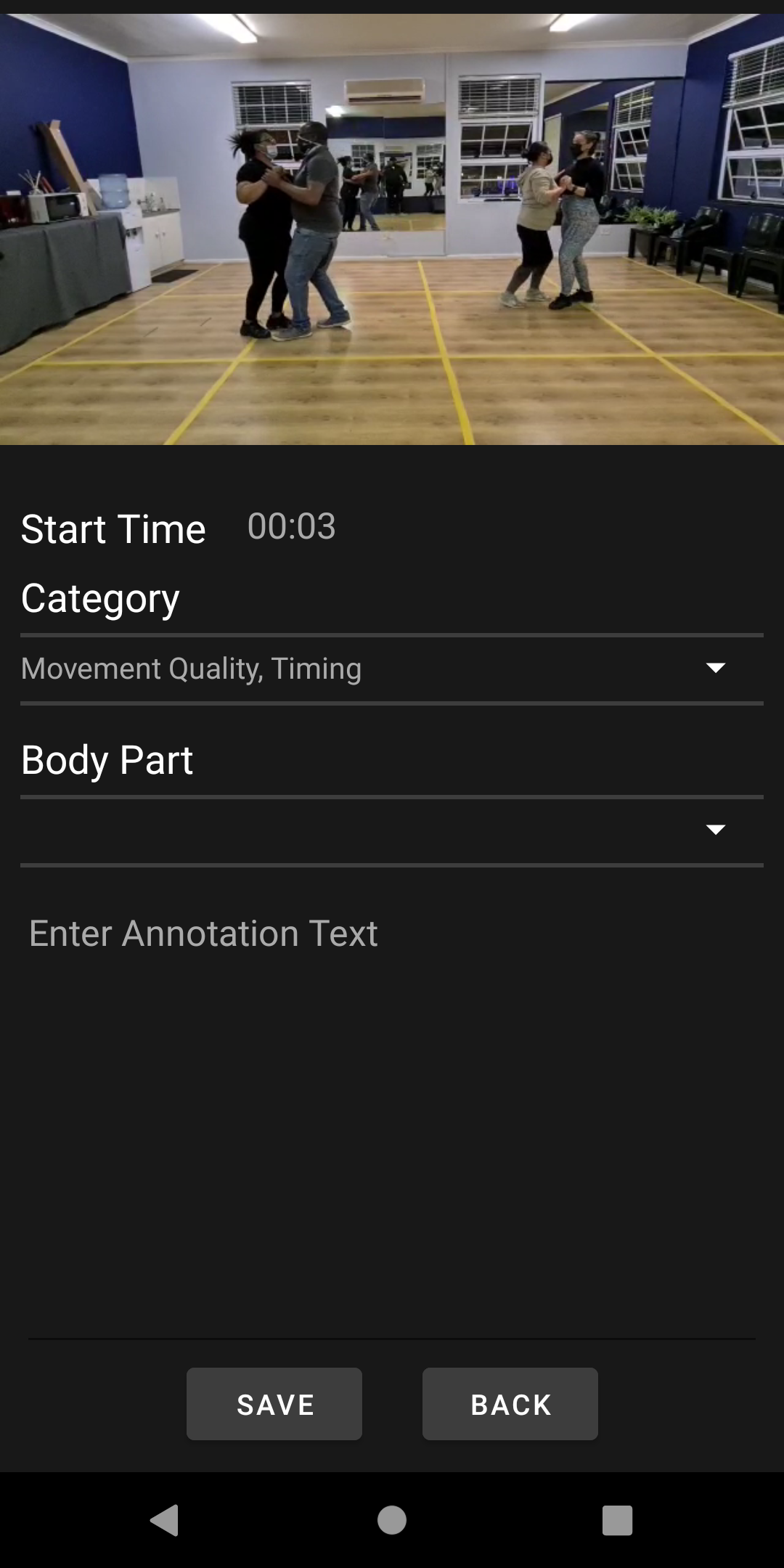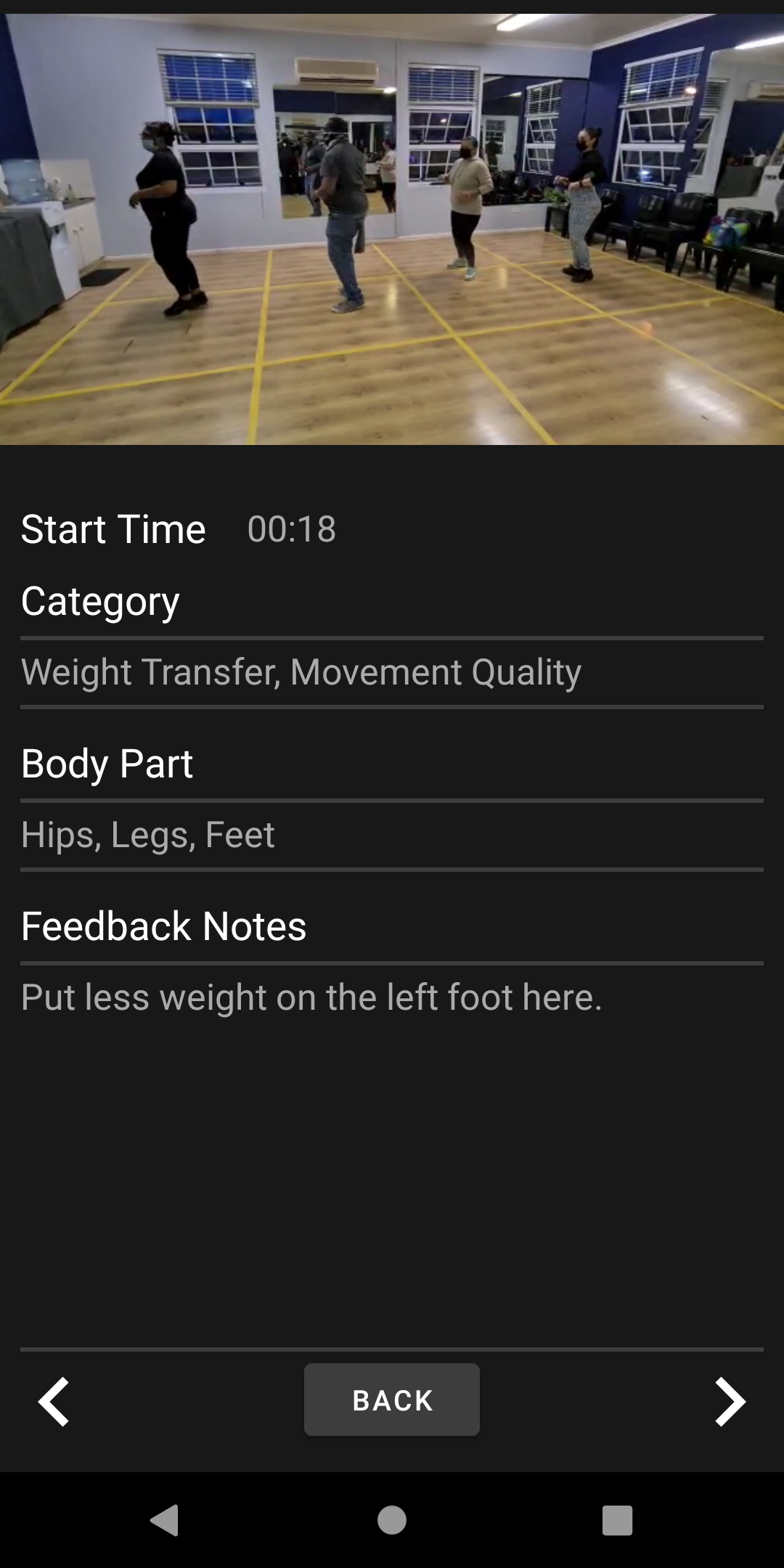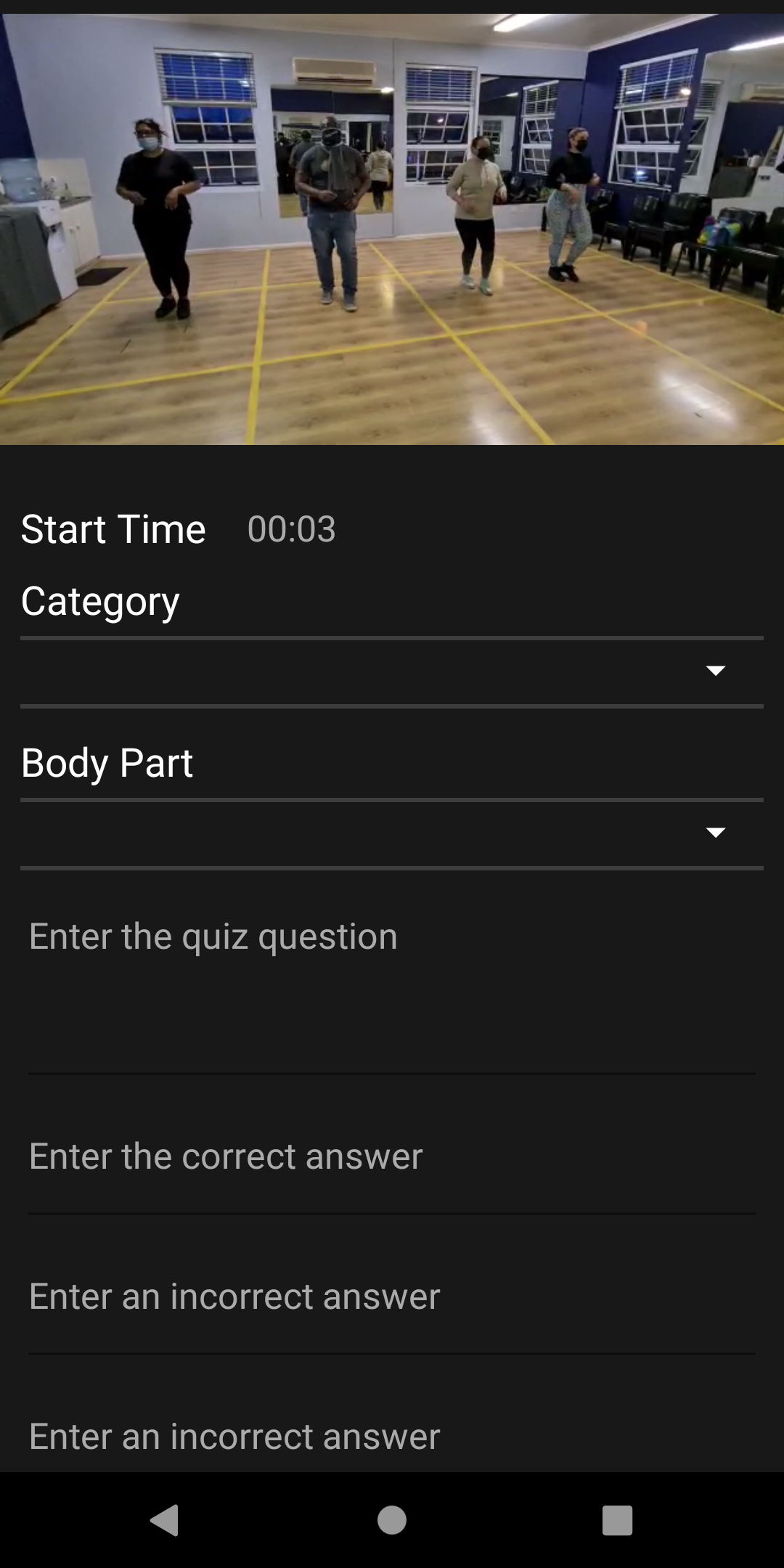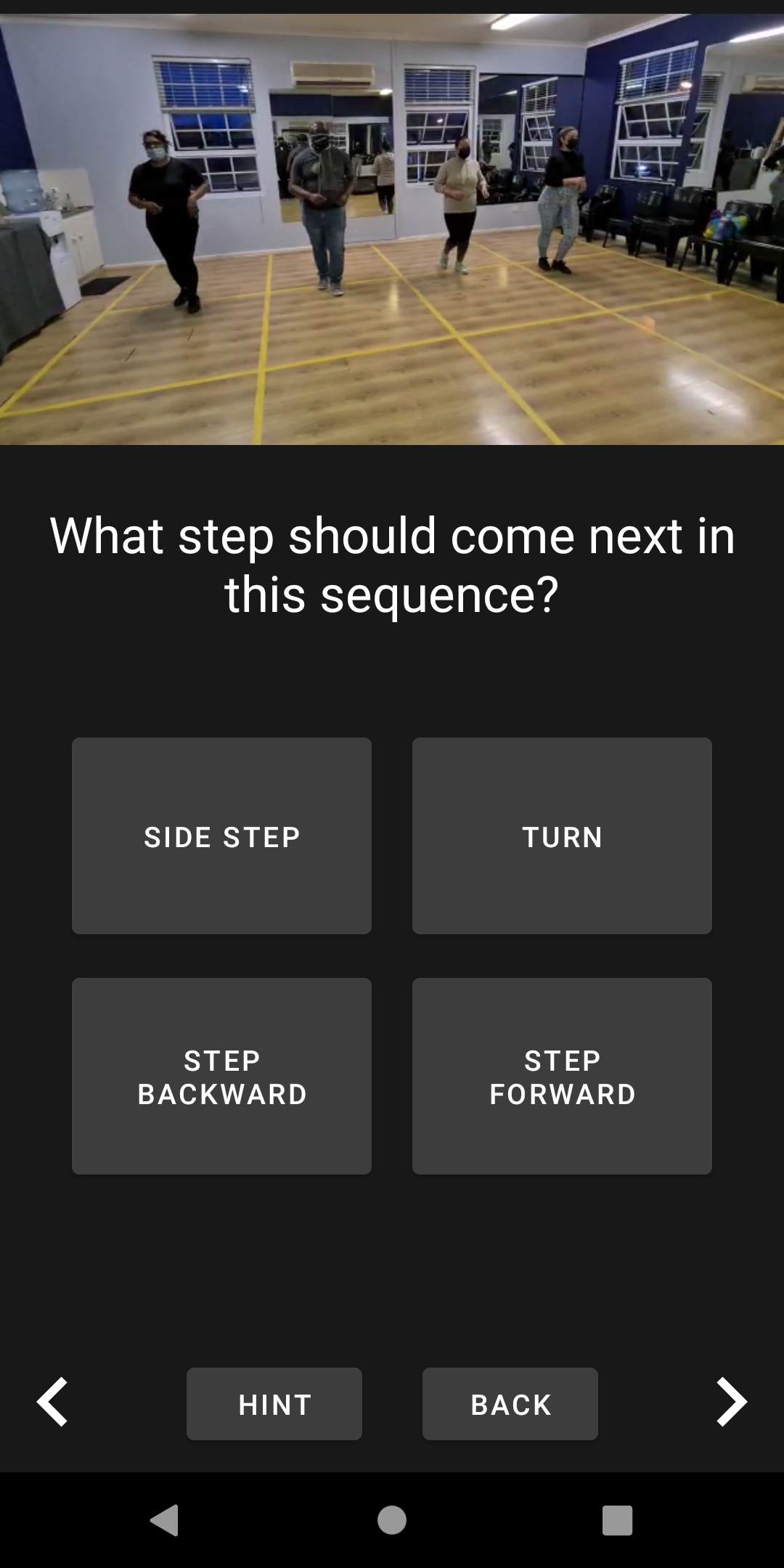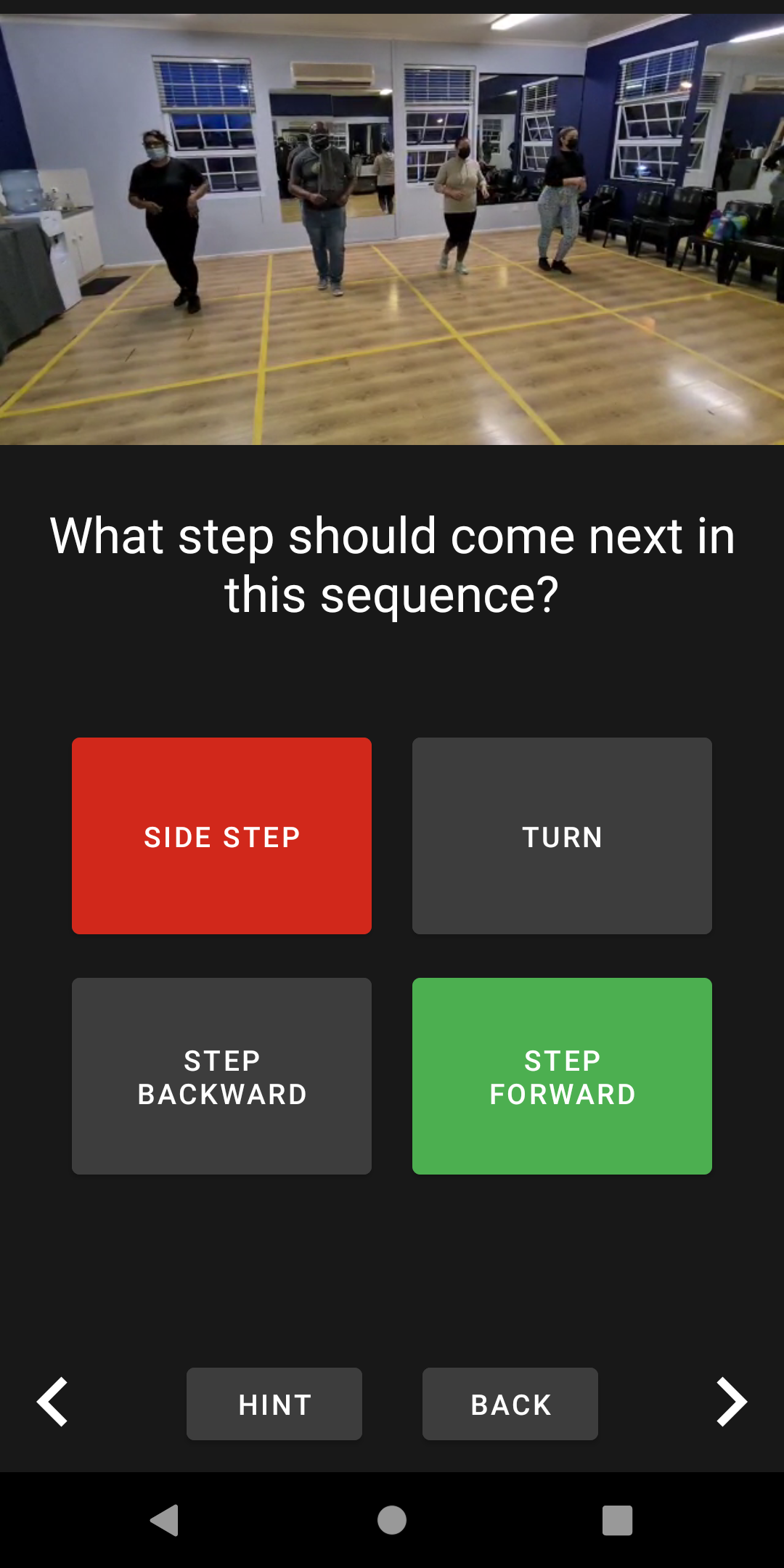Video Annotations for Feedback and Quizzes in Dance Education
Background and Context
Recent advances in dance education technology has seen many projects make use of custom annotation software with the primary goal being to improve the ease with which dance videos can be queried in a database. This allows students to easily find dance pieces to learn from, although the primary purpose has been for the study and preservation of the dance pieces. Additionally, other projects have been done where annotations have been used to provide feedback for student-submitted videos, although these are fewer and have none have been applied to the social dance space in South Africa.
The project by dos Santos, Loke and Martinez-Maldonado (2018) initially proved the usefulness of creating feedback on student-submitted videos in the context of a web based application. Additionally, a study by Hsia and Hwang (2020) proved the usefullness of video annotations to help teach dance theory and steps before in-person classes. This study demonstrated that a flipped classroom method can be implemented in dance education and improve a student's ability to learn the dance steps.
An important component of all the dance annotation systems whether for improved query or feedback purposes was the development of a custom co-developed annotation vocabulary. All the prior studies have made use of an annotation vocabulary which was co-developed with the dance educators that they were partnered with. This vocabulary was used to structure the annotations and provide a translation of how an educator would provide feedback or discuss the dance in classes to the annotations.
A few examples of keywords generated and used for the vocabulary by dos Santos, Loke and Martinez-Maldonado (2018) includes:
- Rhythm
- Pause
- Time betweenmovements
- WeightTransfer
- Step Size
Project Development Aims
The aims of this project are to prove the viability of video annotation as a method to supplement traditional dance education by providing a method for students to receive feedback outside of classes and by allowing students to take quizzes to improve their knowledge of a dance before the class.
The main idea behind the feedback feature is to allow students to continue practicing even outside of class times without the concern that they could reinforce an incorrect step. Additionally, due to Covid-19 the motivation for the feedback feature also includes accomdoating students who cannot make it to in-person classes due to health risks. The main idea for the quizzes was to allow a student to maximize the time they spent dancing in front of the educator in classes by allowing basic terminology, steps and theory to be taught through an interactive quiz, thus implementing an element of flipped classroom learning into social dance classes.
Based on the primary development aims the following functional requirements were decided upon:
- Provide a custom vocabulary with which to annotate dance videos
- Provide a basic video playback application
- Editing/Deletion of annotations
- Ease of navigation between annotations
- Creating a quiz using an existing video
- Completeing a quiz and seeing feedback in the form of a score
- View the annotated feedback videos in a user friendly form

Results
The results of the user evaluations show that the application was able to achieve the initial development aims. Participants were able to complete most of the tasks assigned to them in the evaluations with ease. The one task that users struggled with was navigating between items of feedback or quiz questions. This was subsequently fixed by adding "next" and "previous" arrows to all screens to improve navigation.
| Participant | SUS Value |
|---|---|
| P1 (T) | 77.5 |
| P2 (T) | 67.5 |
| P3 (S) | 92.5 |
| P4 (S) | 85 |
| P5 (S) | 77.5 |
| P6 (S) | 95 |
After the evaluation the participant's were asked to complete a survey based on the System Usability Survey.The convention for interpreting System Usability Survey values is that a score of 68 and above indicates an acceptable application that could be shipped at that point. Based on the scores in Table 1 the overall trend is that most of the participants perceived the application as highly useful. As the one participant who gave a value below 68 was a teacher it is suggested that more work should be done to refine the educator specific sections of the application.
Notable student comments for the presentation of the feedback were, "It wasn't clear if the feedback was for the entire video or sections of
the video -a la Youtube." while another said "It was simple to follow.". Additionally, all student participants did believe the quizzes could
help with learning basic terminology saying, "Definitely gets you thinkning about it from a theoretical perspective before putting
it into practice."
The teachers both believed the feedback feature would be beneficial with one saying, "The annotation would be very useful to students and would give a teacher a
good way to interact with people.". In contrast neither educator was absolutely certain of the usefulness of the quiz as nothing similar
had been attempted before with one teacher saying, "I find it difficult to answer this as the idea of quizzing someone on a video is
quite a novel idea. This may be more usfeul if the multiple choice was supported by a free text elaboration on the answer.".
Conclusions
Overall the feedback from students and teachers was positive with the belief being that these features could be of great assistance in dance education. To properly guage the usefulness of these features in practice it is suggested that a longer term study be done to test a dancer's improvement overtime while using the quiz and feedback features.
